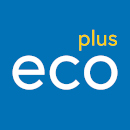
Ad-Proc-Add Project
Issue
How can the entire process chain, including material selection, selection of the appropriate additive manufacturing process and finishing, be optimized in metal 3D printing in such a way that a workpiece is created that meets all the requirements?
Approach
The aim of the “Ad-Proc-Add” (“Advanced Processing of Additively Manufactured Parts”) project funded by the Austrian Research Promotion Agency (FFG) in the CORNET program was to use a combination of 3D printing and finishing processes in order to fulfill this task. Three types of companies were involved in the project: suppliers of raw materials, specialists in specific processes and companies interested in realizing a specific component. Various raw materials (aluminum alloy, tool steel and titanium alloy) were looked at and both subtractive processes and electrochemical surface treatment were examined more closely in finishing steps. Machine hammer peening, abrasive flow machining for smoothing internal surfaces and so-called “Hirtisation” were explored particularly intensively. In this process, developed and protected by Rena Technologies, chemical, electrochemical and hydrodynamic processes work together to optimize the surfaces of additively manufactured workpieces.
Result
In the course of the project, numerous results were achieved on additive metal processing processes at a technological level. In this way, a deeper understanding of the mutual dependencies of geometry, internal cavities and requirements for the finishing process could be gained. There were also many new insights into the interplay between process and design parameters. Several of the participating companies have already been able to integrate additive manufacturing steps into their routine processes.
Contact
Mechatronics Cluster
Thomas Gröger
+43 664 848 26 97
